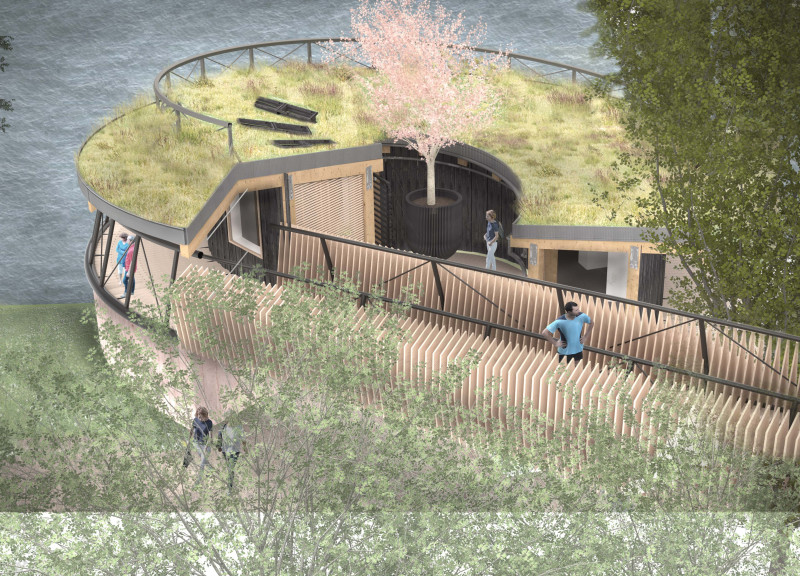5 key facts about this project
At its core, the project aims to foster a sense of place and belonging. The building is designed to accommodate a variety of activities, making it a multifaceted space that is both accessible and welcoming. Its primary function is to serve the community, whether as a gathering space, an educational facility, or a hub for cultural exchange. Each aspect of the architecture is carefully considered to ensure that it facilitates interaction, promotes collaboration, and enhances the overall user experience.
A significant element of the design is its attention to materiality. The choice of materials reflects both aesthetic considerations and functional performance. By utilizing locally sourced materials, the project not only reduces its environmental footprint but also ties the structure more closely to its context. For instance, the use of natural stone and timber offers a warm, inviting quality while ensuring durability. Large expanses of glass allow for optimal natural light, creating a connection between interior spaces and the outer environment. These choices support sustainable practices and contribute to energy efficiency, positioning the project as an exemplar of contemporary eco-conscious architecture.
Unique design approaches are evident throughout various aspects of the project. One notable feature is the incorporation of flexible spaces that can adapt to different activities and user needs. This adaptability is achieved through movable partitions and multifunctional furniture, allowing for dynamic use of the space. Furthermore, various gathering points within the architecture are strategically placed to encourage social interactions among users.
Landscaping plays an essential role in the overall design, with outdoor spaces designed to be extensions of the indoor environment. Gardens, seating areas, and pathways are arranged to promote a seamless transition between nature and architecture. This emphasis on biophilic design nurtures a sense of well-being, fostering connections to nature and enhancing the overall experience for users.
The architectural layout is carefully organized to ensure smooth circulation throughout the building. Clear sightlines and intuitive pathways guide users effortlessly from one space to another, reducing congestion and enhancing usability. Key areas, such as entry points and communal spaces, are designed with a focus on accessibility, ensuring that everyone can comfortably engage with the architecture.
As an architectural project, it invites ongoing exploration and engagement with its design elements. Interested readers are encouraged to delve deeper into the project by reviewing the architectural plans, sections, and various design iterations. By understanding these details, one can appreciate the thoughtfulness embedded in every aspect of the project and how it reflects broader architectural ideas and practices. For a comprehensive perspective on the design, exploring these architectural documents can provide valuable insights into its development and realization.


























